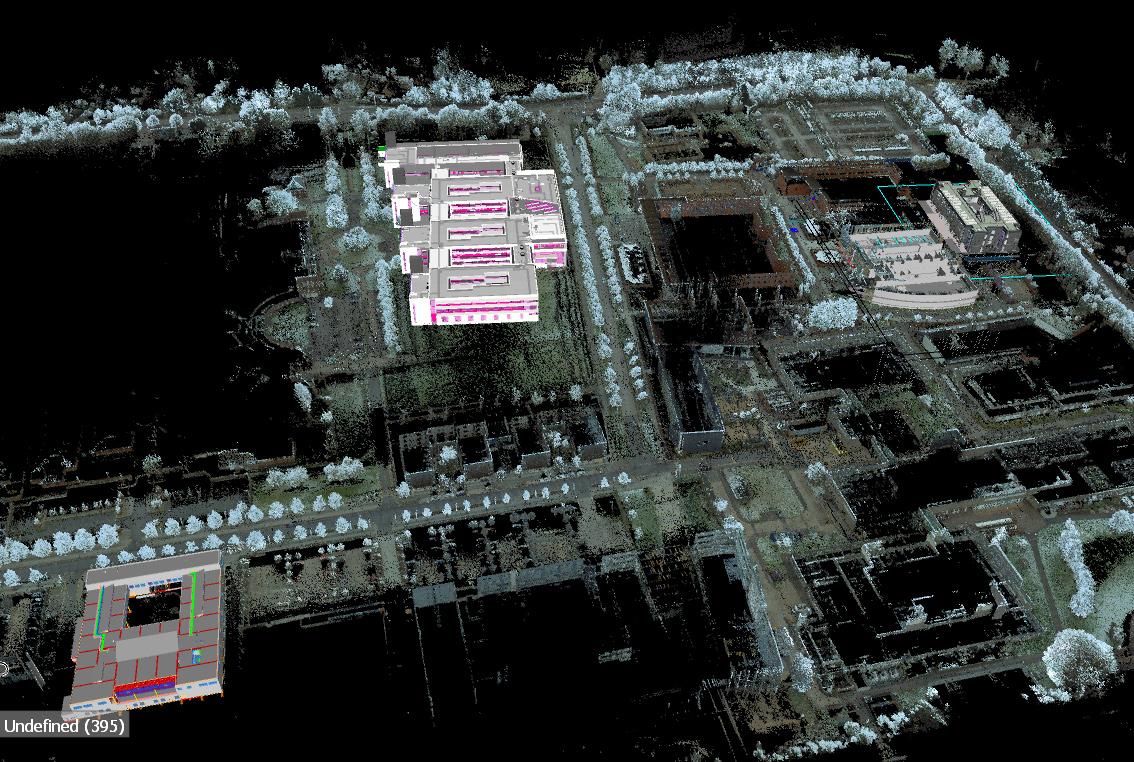
Submitted by Angela Walters on Tue, 15/12/2020 - 14:18
A paper by Dr Nicola Moretti, Dr Xiang Xie, Dr Jorge Merino, Justas Brazauskas and Dr Ajith Parlikad - An openBIM Approach to IoT Integration with Incomplete As-Built Data has been published in a special issue of MDPI’s Applied Sciences Journal focused on Cognitive Buildings. Lead author Dr Nicola Moretti provides a summary of the research in our latest blog.
Digital Twins (DT) are powerful tools to support asset managers in the operation and maintenance of cognitive buildings. Building Information Models (BIM) are critical for asset management (AM), especially when used in conjunction with Internet of Things (IoT) and other asset data collected throughout a building’s lifecycle. The paper sets out to develop an openBIM methodology to support dynamic AM applications with limited as-built information availability.
Building Information Modelling (BIM) is now widely adopted by the industry as part of their digital toolkit, especially when focusing on building systems and components. BIM for building operation has been standardised internationally by ISO 19650-3, which provides guidance for information management during the use phase of the assets.
The benefits of BIM adoption in AM and Facility Management (FM) are well-documented and include:
- Improving the quality of building data (e.g., preventing data replication and limiting redundancy and inconsistency),
- facilitating data integration during the building life cycle,
- improving communication and collaboration between stakeholders, enabling smoother workflows among involved parties according to standardised procedures,
- allowing a reduction in time and cost in the retrieval of FM related information,
- enabling a faster verification process.
However, as a dynamic system, one of the most relevant contemporary challenges in AM is the integration of the static data stored and managed through Asset Management Systems (AMS), with the dynamic data provided by Building Management Systems (BMS) and Internet of Things (IoT) sensor networks deployed for specific building management applications.
The concept of Digital Twins (DT) aims to address the integration of static and dynamic data, thereby enabling the creation of a digital replica of the physical building that is always up-to-date through its life cycle.
The paper presents an openBIM methodology to overcome the separation of static and dynamic information and an awareness that as-built data may be inaccurate or incomplete.
The benefits of this approach include:
- Improved accessibility of the integrated information
- Users’ profiling and access to the right data at the right moment
- Dynamic AM application support, with limited as-built information availability
- Enhanced information quality by better matching with the domain specific requirements from different AM applications
The proposed methodology has been applied to the Institute for Manufacturing (IfM) building located in the West Cambridge campus of the University of Cambridge which is part of the West Cambridge DT Research Facility and has been equipped with a customised IoT sensor network.
The proposed approach supports data integration and interoperability in the digital built environment and enables the effective utilisation of BIM data in the use phase of the assets, supporting the dynamic decision making.
Data from the three systems (BIM environment, IoT platform and BMS) were integrated and processed, focusing on the usability of the systems, building a new data structure on top of the existing data sets. Accordingly, information can be accessed and used, integrating and supporting the workflows and operations of the asset management team. The data re-aggregation and processing allows useful insights supporting operations in AM of cognitive buildings.
The methodology was developed employing open source software for better interoperability and cross-platform usage. The open standard IFC (Industry Foundation Classes) is used to support information management in the context of the cognitive buildings and smart built environments. IFC also allows the accessibility and integration capabilities to be increased in the development of further applications.
The proposed approach has shown good applicability to existing buildings, allowing the issues arising from the lack or incompleteness of data to be addressed. Through the proposed methodology, the potential of siloed data can be accessed more easily, supporting the development of asset management applications for cognitive buildings. It offers an effective approach to data integration in the mid-term perspective, providing support for both the integration of static AM information and real-time IoT data.
Furthermore, this paper demonstrates the potential of the openBIM approach in built AM, enabling a data-driven approach that can help to reduce the uncertainty arising from the lack of knowledge on the physical and digital assets and automating operations. In future research, its robustness should be tested in the development of additional application case studies.
This research forms part of the Centre for Digital Built Britain’s (CDBB) work at the University of Cambridge within the Construction Innovation Hub (CIH). The CIH is funded by UK Research and Innovation through the Industrial Strategy Fund. Read the paper in full here - An openBIM Approach to IoT Integration with Incomplete As-Built Data.
Follow the ongoing research on the Project Page and reach the Research Profile for this research here.
